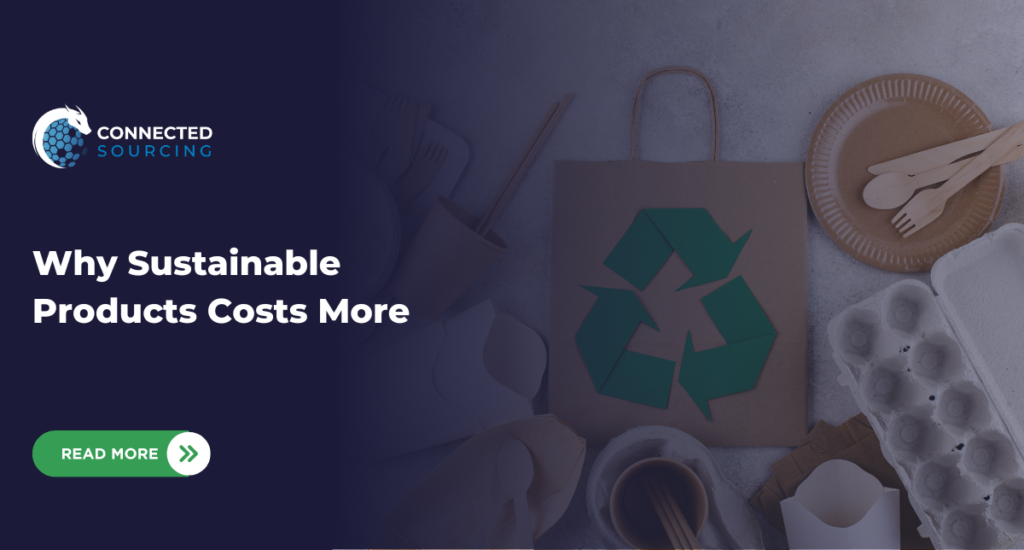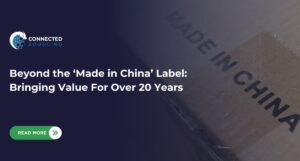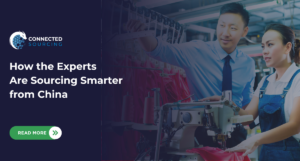
In today’s increasingly interconnected world, with pressing issues such as climate change, resource shortages, international conflicts, and the COVID-19 pandemic affecting the global marketplace, lawmakers and social activists are taking steps to strengthen laws and regulations to protect the environment and encourage sustainable practices. As a result, businesses are being held to a higher standard and must be more conscientious in their operations in order to meet the growing demand for more sustainable products.
Some brands have become pioneers in embracing sustainability, and their efforts have been rewarded with increased sales. Since the trend to use sustainable raw materials has become increasingly popular, many businesses have embraced it as a way to demonstrate their commitment to responsible social practices which has allowed them to differentiate themselves from competitors. Given this information, we will explore the potential benefits of sustainable manufacturing and why it has become such a popular area of business.
With more than 15 years of experience as sourcing agents in the Chinese market, we’ll discuss how a typical bag or rucksack is designed and manufactured. Having worked closely with suppliers over the years, we’ve gained an extensive understanding of the characteristics of recycled materials when making bags and their associated limitations, as well as the market adoption of such materials.
Recycled Materials
A recycled material is not a material that has been recycled, but a material that has been produced from a variety of recycled materials.
The use of recycled plastics presents a challenge for manufacturers of high-quality sustainable products, as they require raw materials that are clean and uncontaminated by foreign elements such as other plastics, metal chips, springs, and clips, which can wreak havoc on the injection moulding machines.
Ideally, when ordering recycled plastic from a supplier, you should ensure its quality and consistency by only sourcing from reputable plastics recyclers that conform to ISO standards. This way, you can have the peace of mind that the source and characteristics of the recycled materials they offer are backed up by paperwork.
Global Recycled Standard
The Global Recycled Standard (GRS) is a voluntary product standard created to track and verify the content of recycled materials in a final product. This standard applies to the entire supply chain and covers traceability, environmental principles, social requirements, chemical content, and labelling. With GRS certification, businesses can demonstrate their commitment to truth in materials and support for a circular economy that reduces waste by reusing it in the production of new goods.
Bag Components
Bag materials:
PET – polyethylene terephthalate
A large number of bags are mostly made of polyester fabric, which is chemically known as polyethylene terephthalate, or PET. Unlike certain types of plastics, PET can be recycled either through the hydrolysation process for re-polymerisation, or by breaking down waste PET into flakes and then granulised for further processing back into yarns. This yarn can then be used to weave zipper tapes or be re-used for monofilament extrusion.
Recycled fabric is typically recovered from the plastic waste that is present in the ocean. Additionally, there are material suppliers and fabric mills that specialize in working with recycled polyethylene terephthalate (rRPET) and hold GRS certification.
How wide is the usage of the RPET material across the bag industry in general?
Application of rPET in the bag industry has been growing over the last two years, however, it occupies no more than 5% of production in the main factories in China. This is due to consuming firms rejecting the high costs associated, which we could attribute to the general immaturity of the recycled material industry.
What is the state of the rPET material market?
According to MR data, as consumers and the markets preference for sustainable and recyclable products continues to grow, it is estimated that by the end of 2031, the global RPET market will grow at a compound annual growth rate of 8%, with a total amount of $4.2 billion.
Since January 2021, the price of recycled PET chips in Europe has soared by 103% to 1690 euros per ton. The price of waste bottles used for the production of recycled PET chips increased even faster, more than doubling since January 2021. The price of recycled plastics in the United States also increased sharply. At present, the price of RPET has exceeded that of virgin PET.
During the last year, many enterprises and brands have built or purchased recycling plants in Europe and the Americas to continuously expand recycling capacity and increase rPET usage.
Cotton
At the outset, cotton appears to be a sustainable fabric that could be used for bag manufacturing. However, when you look closer, it is not quite as it seems. The reality is that the large majority of cotton is grown on farms that treat the land with synthetic fertilizers.
So while cotton is biodegradable, its production degrades the soil and introduces a range of pesticides that impacts the ecosystem. That is unless it is grown organically, which negates this issue. Currently, only 1% of cotton is grown organically, and this type of cotton comes at a higher cost.
Canvas
Canvas’ key strength is its durability and sturdiness, making it a more sustainable product than cotton. However, the materials used to make it (i.e. cotton or linen plus polyvinyl chloride [PVC]) are what give it its durability, but also contribute to its downfall as PVC takes 200 years to decompose.
Jute
Jute, often referred to as the “golden fibre”, is both recyclable and biodegradable, making it an economical and sustainable plant to grow. Not requiring much maintenance or fertilisers, it can even improve the fertility of the ground it is in.
Sadly though, Jute is prone to mould, colour changes, and more significantly, it absorbs moisture and can eventually dissolve in water over time. For this reason, it is not the best material for making bags.
Woven or non-woven polypropylene
Bags made from polypropylene are not only durable, waterproof, and stain-resistant, but they also boast many other beneficial properties that make them strong and reliable. Such bags are commonly used for shopping, tote bags, backpacks, and sports bags.
While polypropylene is a by-product of the oil manufacturing industry, it is also a recyclable material under the right conditions and has a much shorter biodegradable timeframe (30 years) than other plastic materials that can take up to 200 years to decompose. What’s more, it is thought that just 11 uses of the same bag already equate to the total eco-footprint of a typical plastic bag.
Zippers
Generally, the supplier market is lagging behind when it comes to the adoption of rPET in comparison to fabrics. While a few large players such as YKK and Slik Zip manufacture using rPET, widespread adoption is still yet to happen. This is unfortunate, as the performance of a recycled material zipper does not differ from the performance of a regular zipper.
In some cases, due to the waterproof coating material being TPU (which cannot currently be made from recycled materials), a zipper cannot be 100% made from recycled material – only the polyester zipper tapes and zipper teeth can be made from recycled materials.
Plastic buckles
The control of the quality of recycled plastic buckles is still at an immature stage in China. There are no feasible manufacturers of recycled plastic material buckles that satisfy our sustainability standards. We carried out market research and these were our findings:
KJMCoBuckle
- Imported raw material granules
- Meets RPHS and REACH standard
- Streamlined process supervision and quality system
- Independent R&D for mould development
Typical suppliers
- Poor quality control system after raw material
- Recycled materials hardly pass safety test standards
- No quality control for semi-finished products
Velcro
Velcro is made of nylon, a synthetic material that is not typically eco-friendly. Nylon is made from petroleum and can be melted and moulded into various fibres and shapes, but the fundamental molecules that make nylon can also be mixed with other materials in order to give their specific properties.
However, since the nylon recycling industry is still in its early stages, there is currently no feasible manufacturing resource for recycled nylon Velcro. The best way to optimize eco-friendliness in bag production is to reduce Velcro usage and replace it with other materials.
Reflective material
Reflective fabrics can be divided into several varieties based on their composition, including reflective chemical fibres, reflective TC, reflective single-sided elastic cloth, and reflective double-sided elastic cloth. The production of these fabrics involves coating or film covering the surface of the base fabric with micro glass beads of a high refractive index, which allows the fabric to reflect light upon being illuminated.
Recycled polyester is a common material used in the production of these fabrics, making them an environmentally-friendly choice.
Chinese Bag Manufacturing Regulations
The Environmental Protection Bureau has no requirement or standard for the bag production industry and registration is not necessary. Their justification is as follows:
- Unlike some of the clothing industries, the bag industry does not affect the air and water as it does not involve heavy usage of chemicals in the manufacturing process
- Main production processes include cutting and sewing, which does not involve the usage of water, hence no water purification or recycling is required
- Machinery used in the process mainly includes sewing machines which do not negatively affect the air
- Production wastage materials: there are waste material collection companies that collect the material, hence no material utilization programs are required
Conclusion
If bag companies are serious about producing a bag from recycled materials, then it is possible with conscious design and strategic material choices. However, these choices come with a higher cost to the end consumer, which can be a barrier to achieving sustainability goals.
We believe that brands have two key responsibilities to achieve sustainability: Firstly, they must communicate to their consumers the materials they are using for their sustainable products and why, and secondly, they must create long-lasting quality items that justify their higher cost. By doing so, we can break the deadlock and create a more sustainable future for everyone.





















